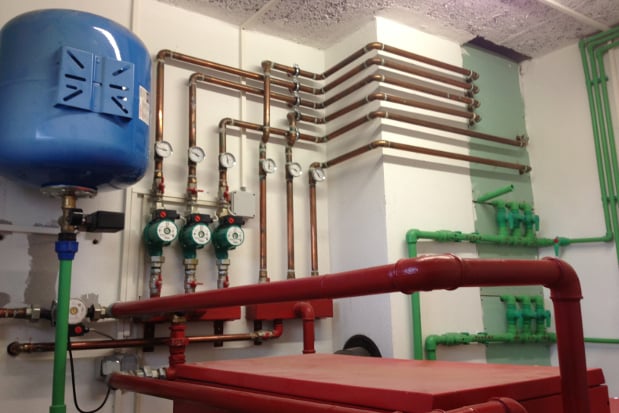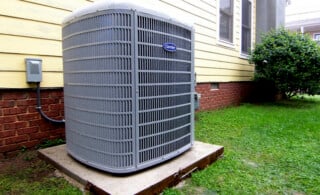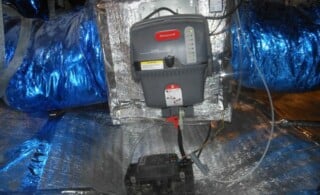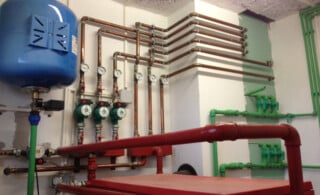
Have you ever rushed in from the winter cold and felt that first blast of warm air as you open your door, only to find yourself tired and losing focus an hour later? You sit down on your couch or recliner and reach for a blanket because your feet are cold. You lean back and your sweater shifts between the back of the chair and your shoulder. Your dried skin starts to itch and you start counting the days until spring will let you turn your heat off. You’re not alone. You’re part of the 70 percent of Americans who are dissatisfied with their heating system, and you’re almost certainly part of the 90 percent of Americans who have forced air heating installed in their home.
How Hydronic Heating Works
Hydronic heating works by using the efficient transfer of heat through water. Since water conducts heat more easily than air, less energy is used to spread heat throughout the house. A heat source must be present. (Frequently, a boiler is used for hydronic heating but, for smaller homes, alternative, cheaper sources may be sufficient, given the cost of a boiler.) The heat is carried through the house by pipes that are installed in the ceiling, walls, baseboards or, ideally, underneath your floor. These pipes transfer heat to the walls of a room, which then radiate heat waves throughout the house, creating a subtle, uniform warmth that provides superior comfort.
How Your Thermostat Lies
Your thermostat can be misleading in two ways. First, a thermostat can only measure temperatures at specific points in your house. In a forced air heating system, the temperature variance in the distance just from your feet to your eye level can be as much as 15 degrees. If you have a two-story home or, worse, vaulted ceilings this difference may be accentuated.
Second, a thermostat can only measure air temperature and not resultant temperature. Resultant temperature is the result of a combination of the air temperature, humidity, and the mean radiant temperature of the surrounding space. Resultant temperature is the best indicator for indicating the actual comfort level inside a home. You may go to a neighbor’s home and feel warmer and more comfortable, only to discover the thermostat is set to the same temperature (or even lower) than your thermostat. Your neighbor’s home has a better resultant temperature.
Ready to start your Hydronic System?
Find ProsHydronic Cooling
Most hydronic systems provide both heating and cooling options. Hydronic cooling works in essentially the same way as the heating system. Cold water is used in the pipes to cool the walls of your home. This cooling process is still more efficient than traditional air conditioning systems. Hydronic heating tends to get the focus only because the quality difference is most evident in the winter, and the heat quality is why most homeowners decided to install the system.
The Cost of Installation
The most common reason homeowners haven’t installed hydronic heating and cooling in their homes is the installation cost. Installation costs can vary significantly depending on whether your home needs a boiler to create a sufficient heat source and how accommodating the structure of your home is for installing the necessary pipes. Unfortunately, too many homeowners hear that hydronic heating is too expensive to install and don’t bother to get a free estimate or to learn just how much a system can reduce their monthly utility bills.
 Air Conditioner Condenser Coil Costs, Repairs & Replacements
Air Conditioner Condenser Coil Costs, Repairs & Replacements  Whole House Humidifiers
Whole House Humidifiers  Choosing Green: Boilers and Radiator Heating Systems
Choosing Green: Boilers and Radiator Heating Systems  Consider Wood-Burning Furnaces
Consider Wood-Burning Furnaces  Outdoor Heaters: a Refuge from the Cold
Outdoor Heaters: a Refuge from the Cold 

Dealing with a cool bedroom is frustrating. If you turn up the heat to warm the room, the rest of the house gets too warm. Shut all the heating registers except the bedroom and it puts too much back pressure on the furnace. Too often I see a household try to adjust the temperature of one room by closing heating registers in other rooms and soon they have half the registers in the house closed and the home heating system working overtime to satisfy the heating request at the thermostat.